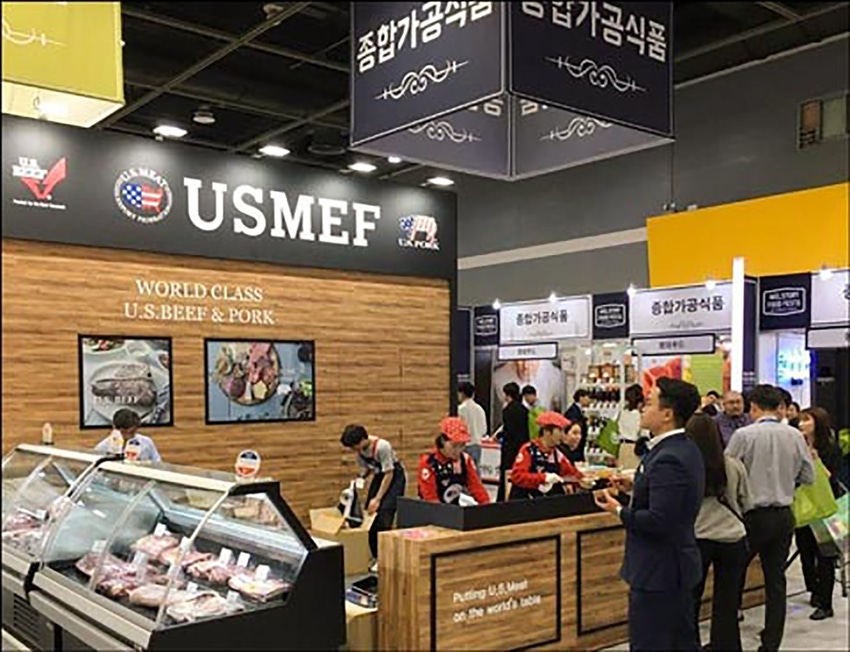Due to increasing concerns about African swine fever, visitors to the showcase had even greater interest in U.S. pork picnic, as well as Boston butt.
January 6, 2020

South Korea's institutional foodservice sector is undergoing a transformation that has catering companies and similar businesses searching for new products and suppliers, creating new opportunities for U.S. beef and pork. As part of its strategy to increase U.S. share in this market segment, the U.S. Meat Export Federation participated in the Samsung Welstory Food Festa, a private showcase that attracted more than 1,500 foodservice operators and managers.
USMEF's two-day promotional effort was funded by the USDA Market Access Program, the Beef Checkoff Program and the National Pork Board.
"The institutional foodservice sector in Korea is seeing changes to its customer base due to demographic shifts and changes in dining habits, so companies are looking at ways to attract new customers and to increase loyalty among existing customers," says Jihae Yang, USMEF director in Korea.
Samsung Welstory – the country's largest institutional foodservice company, serving more than 1 million meals per day – launched the Food Festa to bring foodservice suppliers together in one place. USMEF participated in the showcase for the first time in 2018, and Yang says there was significant interest in U.S. beef and pork. Interest was even stronger in 2019, due in part to the recent confirmation of African swine fever in South Korea.
"For example, in the foodservice sector, U.S. pork picnic has been competing with domestic pork ham as a central ingredient for various dishes in Korea – that was a big point of discussion last year," says Yang. "Due to increasing concerns about ASF, visitors to the showcase had even greater interest in U.S. pork picnic this year, as well as Boston butt."
Along with those two cuts, USMEF displayed and promoted U.S. pork back ribs and CT butt, as well as U.S. beef chuck eye roll, strip loin, shoulder clod, ribeye, bone-in and boneless chuck short rib, chuck flap tail and top blade.
Tasting samples were distributed at the USMEF booth, with marinated U.S. beef and pork bulgogi given to visitors. A popular foodservice menu item in Korea, bulgogi is made with thinly slice beef or pork prepared in soy sauce, sugar and Korean pear juice. The meat is then grilled.
USMEF also offered new menu ideas for institutional catering services, which typically offer meals of cooked rice, soup and three or four side dishes often made with beef or pork.
Alex Choi, USMEF assistant marketing manager in Korea, said that in the past many institutional catering businesses have relied on competitors' products, such as Australian beef and European pork.
"We noticed last year that catering managers and buyers started to show great interest in U.S. pork and beef due to the consistent supply and competitive prices," says Choi. "For example, USMEF introduced U.S. beef clod into the Korean market at the end of 2016. Today, U.S. beef is getting more attention from institutional catering companies that were users of Australian beef. Also, the presence of U.S. pork Boston butt is gradually increasing in this sector."
Source: U.S. Meat Export Federation, which is solely responsible for the information provided, and wholly owns the information. Informa Business Media and all its subsidiaries are not responsible for any of the content contained in this information asset.
About the Author(s)
You May Also Like



